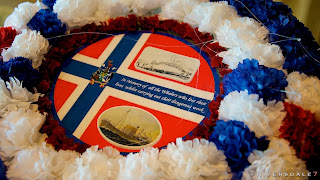 The plan for today was not much of a plan. We learned at
yesterdays briefings for todays activities that the weather and ice conditions
in Antarctic Sound might be grim. The conditions in the forecast were accurate.
Ice conditions along the southeastern side of Antarctic Sound prevented us from
venturing to a landing on the
The plan for today was not much of a plan. We learned at
yesterdays briefings for todays activities that the weather and ice conditions
in Antarctic Sound might be grim. The conditions in the forecast were accurate.
Ice conditions along the southeastern side of Antarctic Sound prevented us from
venturing to a landing on the
There was only light snow but it blew nearly horizontally as
winds gusted to 19 meters per second or 40 miles per hour.
We selected Kinnes Cove on the southwest side of Joinville Island
Here we could scramble over the bare andesite rocks to the
snow field above where we found ourselves among a large mixed colony of Adelie
and Gentoo Penguins. The wind continued to gust and the snow continued but all
of us had the full experience of a true Antarctic day landing under true
Antarctic conditions. Conditions that to be honest were a major downgrade from
the sunny and relatively warm and calm conditions we have had at our landings
in the South Georgia and yesterday at Elephant Island
These true Antarctic weather conditions prevailed the rest
of the day. We motored southwesterly in Antarctic Sound dodging floating ice.
On the bridge, our biologists kept a continuous lookout for wildlife, snow
hampered long range visibility but we did see humpback whales on several
occasions.. Our travels in Antarctic Sound came to an end at Rosamel Island Weddell
Sea .
 At Rosamel we reversed course and headed for
At Rosamel we reversed course and headed for
A CLOSING CORRECTION:
In yesterdays blog there was an error concerning the Shackleton’s
small boats.
Shackleton’s men arrived at Elephant Island in 3 boats: the
James Caird, the Dudley Docker and the Stancomb Willis. For the sail to South Georgia the James Caird was strengthened and decked
over.




















































